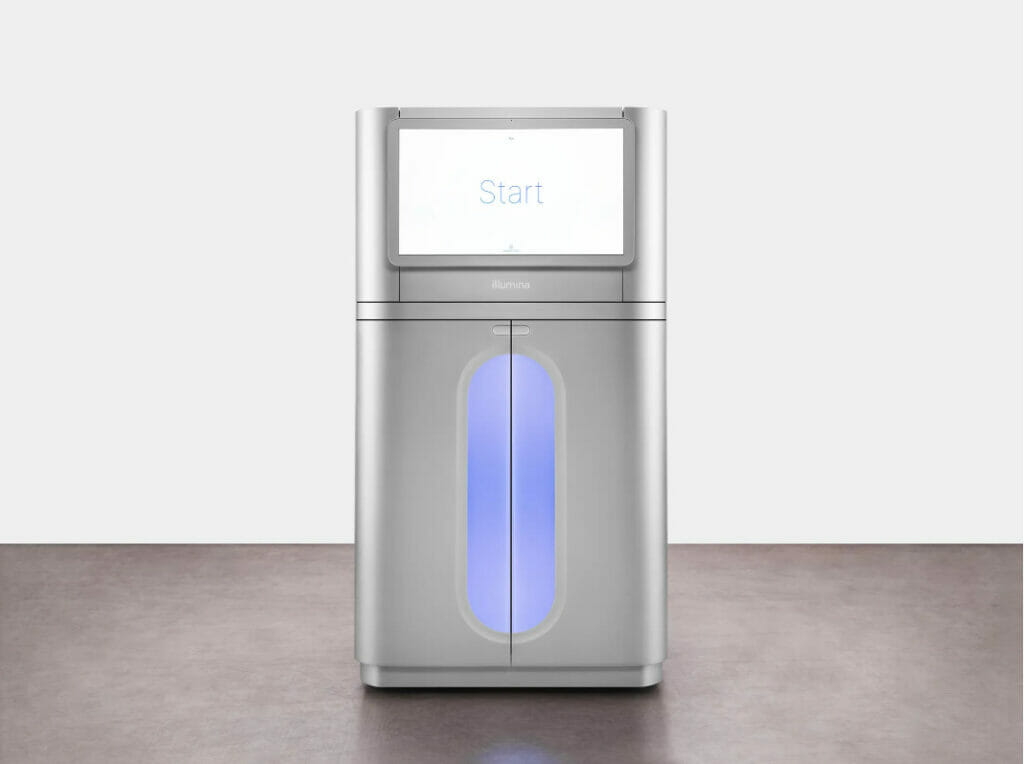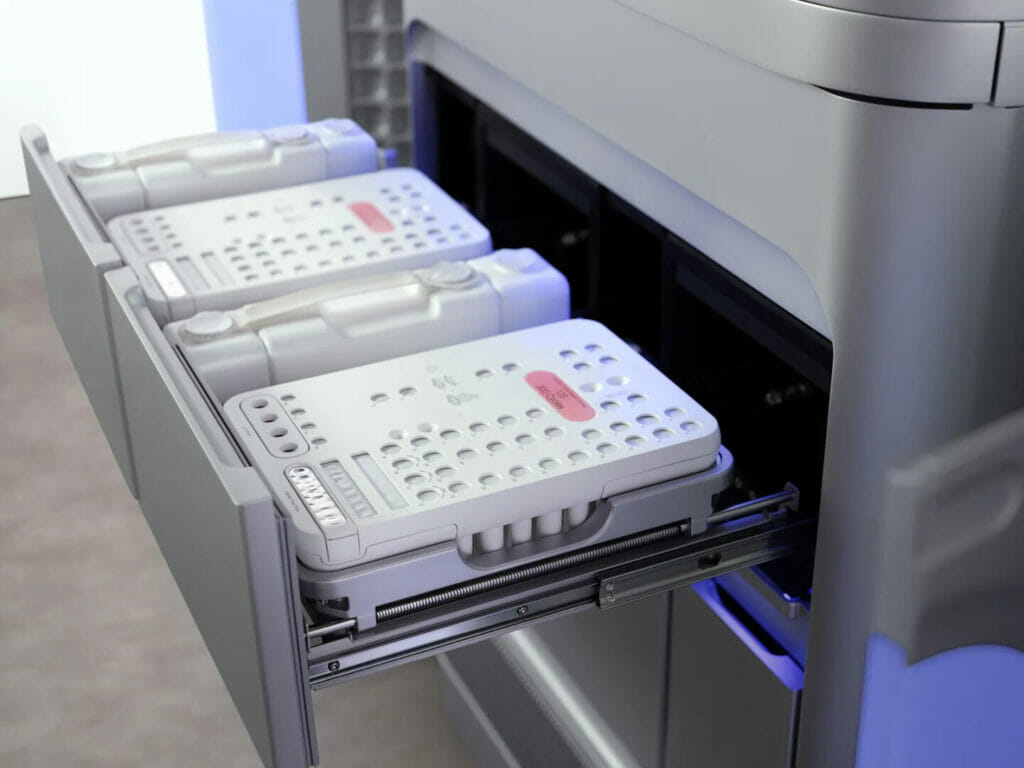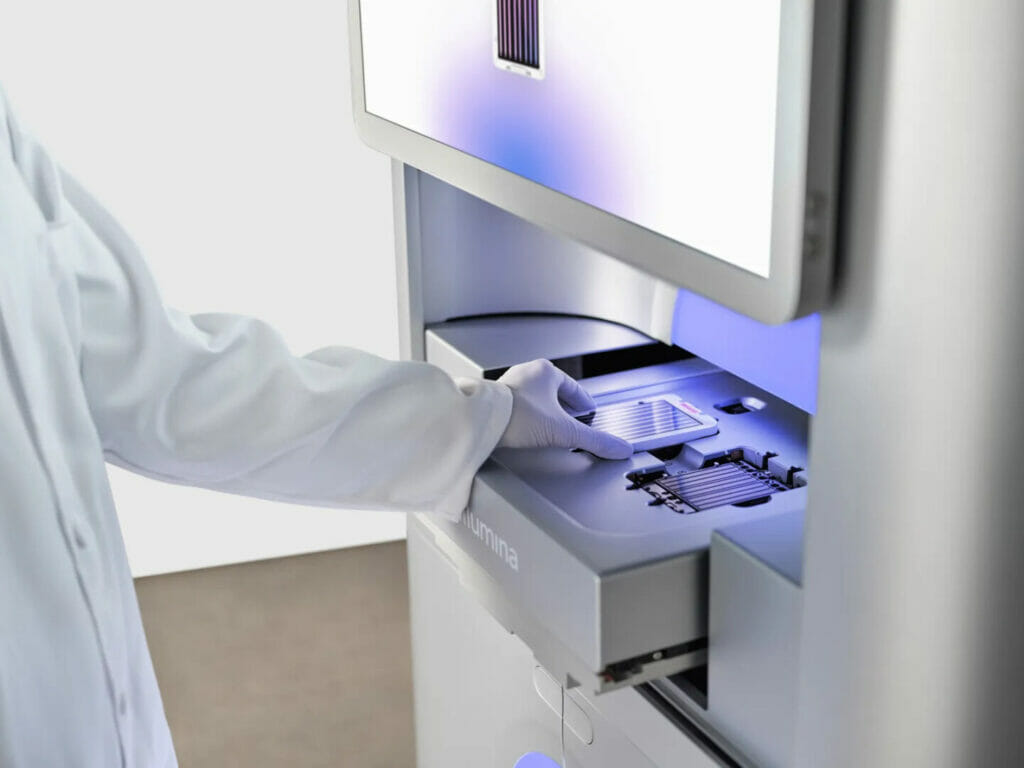The following report is by Wired:
THE HUMAN GENOME is made of more than 6 billion letters, and each person has a unique configuration of As, Cs, Gs, and Ts—the molecular building blocks that make up DNA. Determining the sequence of all those letters used to take vast amounts of money, time, and effort. The Human Genome Project took 13 years and thousands of researchers. The final cost: $2.7 billion.
That 1990 project kicked off the age of genomics, helping scientists unravel genetic drivers of cancer and many inherited diseases while spurring the development of at-home DNA tests, among other advances. Next, researchers started sequencing more genomes: from animals, plants, bacteria, and viruses. Ten years ago, it cost about $10,000 for researchers to sequence a human genome. A few years ago, that fell to $1,000. Today, it’s about $600.
Now, sequencing is about to get even cheaper. At an industry event in San Diego today, genomics behemoth Illumina unveiled what it calls its fastest, most cost-efficient sequencing machines yet, the NovaSeq X series. The company, which controls around 80 percent of the DNA sequencing market globally, believes its new technology will slash the cost to just $200 per human genome while providing a readout at twice the speed. Francis deSouza, Illumina’s CEO, says the more powerful model will be able to sequence 20,000 genomes per year; its current machines can do about 7,500. Illumina will start selling the new machines today and ship them next year.

As we look to the next decade, we believe we’re entering the era of genomic medicine going mainstream. To do that requires the next generation of sequencers. We need price points to keep coming down to make genomic medicine and genomic tests available much more broadly.
deSouza says.

Sequencing has led to genetically targeted drugs, blood tests that can detect cancer early, and diagnoses for people with rare diseases who have long sought answers. We can also thank sequencing for the Covid-19 vaccines, which scientists started developing in January 2020 as soon as the first blueprint of the virus’s genome was produced. In research labs, the technology has become essential for better understanding pathogens and human evolution. But it still isn’t ubiquitous in medicine. That’s in part because of the price tag. While it costs around $600 for scientists to perform sequencing, clinical interpretation and genetic counseling can drive the price to a few thousand dollars for patients—and insurance doesn’t always cover it.
Another reason is that for healthy people, there’s not yet enough evidence of benefits to prove that genome sequencing will be worth the cost. Currently, the test is mostly limited to people with certain cancers or undiagnosed illnesses—although in two recent studies, around 12 to 15 percent of healthy people whose genomes were sequenced ended up having a genetic variation that showed they had an elevated risk of a treatable or preventable disease, indicating that sequencing may provide an early warning.
For now, researchers—not patients—will likely benefit most from cheap sequencing.
We’ve been waiting for this for a long time. With greatly reduced costs and greatly increased speed of sequencing, we can sequence way more samples.
Says Stacey Gabriel, chief genomics officer at the Broad Institute of MIT and Harvard, of the new improvements.
Gabriel is not affiliated with Illumina, but the Broad Institute is something of an Illumina power user. The institute has 32 of the company’s existing machines and has sequenced more than 486,000 genomes since it was established in 2004.
Gabriel says there are a number of ways that researchers will be able to apply added sequencing power. One is to increase the diversity of genomic datasets, given that the vast majority of DNA data has come from people of European descent. That’s a problem for medicine, because different populations might have different disease-causing genetic variations that are more or less prevalent.
There’s really an incomplete picture and a hampered ability to translate and apply those learnings to the full population diversity in the world.
Gabriel says.
Another is to boost the size of genetic datasets. In the early 2000s, when the Broad Institute started a project to search for genes related to schizophrenia, researchers had 10,000 genomes from people with the condition, which didn’t yield many insights, Gabriel says. Now, they have amassed more than 150,000.

Comparing those genomes to those of people without schizophrenia has allowed investigators to uncover multiple genes that have a profound impact on a person’s risk of developing it. By being able to sequence more genomes faster and more cheaply, Gabriel says they’ll be able to find additional genes that have a more subtle effect on the condition. “Once you have bigger data, the signal becomes clearer,” she says.
This is the kind of thing that shakes up everything you’re working on. This reduction in sequencing cost allows you to scale up and do more of those large research studies.
Agrees Jeremy Schmutz, a faculty investigator at HudsonAlpha Institute for Biotechnology, of new sequencing technology.
For Schmutz, who studies plants, cheaper sequencing will allow him to generate more reference genomes to better study how genetics influence a plant’s physical characteristics, or phenotype. Large genomic studies can help improve agriculture by accelerating the breeding of certain desirable crops, he says.
Illumina’s sequencers use a method called “sequencing by synthesis” to decipher DNA. This process first requires that DNA strands, which are usually in double-helix form, be split into single strands. The DNA is then broken into short fragments that are spread onto a flow cell—a glass surface about the size of a smartphone. When a flow cell is loaded into the sequencer, the machine attaches color-coded fluorescent tags to each base: A, C, G, and T. For instance, blue might correspond to the letter A. Each of the DNA fragments gets copied one base at a time, and a matching strand of DNA is gradually made, or synthesized. A laser scans the bases one by one while a camera records the color coding for each letter. The process is repeated until every fragment is sequenced.
For its latest machines, Illumina invented denser flow cells to increase data yield and new chemical reagents, which enable faster reads of bases.
The molecules in that sequencing chemistry are much stronger. They can resist heat, they can resist water, and because they’re so much tougher, we can subject them to more laser power and can scan them faster. That’s the heart of the engine that allows us to get so much more data faster and at lower costs.
Says Alex Aravanis, Illumina’s chief technology officer.
That said, while the cost per genome is dropping, for now, the startup cost for a machine itself is steep. Illumina’s new system will cost around $1 million, about the same as its existing machines. The high price tag is a key reason they’re not yet common in smaller labs and hospitals, or in rural regions.
Another is that they also require experts to run the machines and process the data. But Illumina’s sequencers are completely automated and produce a report comparing each sample against a reference genome. Aravanis says this automation could democratize sequencing, so that facilities without large teams of scientists and engineers can run the machines with few resources.
Illumina isn’t the only company promising cheaper, faster sequencing. While the San Diego-based company currently dominates the marketplace, some of the patents protecting its technology expire this year, opening the door for more competition. Ultima Genomics of Newark, California, emerged from stealth mode earlier this year promising a $100 genome with its new sequencing machine, which it will begin selling in 2023. Meanwhile, a Chinese company, MGI, began selling its sequencers in the United States this summer. Element Biosciences and Singular Genomics, both based in San Diego, have also developed smaller, benchtop sequencing machines that could shake up the marketplace.
Ultima’s machine design has replaced the traditional flow cell with a round silicon wafer just under seven inches in diameter. Josh Lauer, the company’s chief commercial officer, says the disc is cheaper to manufacture and has a bigger surface area than a flow cell, allowing more DNA to be read at once. Because the disc rotates like a record under a camera instead of moving back and forth like flow cells do, Lauer says it requires smaller volumes of reagents and speeds up imaging.
We think this will enable scientists and clinicians to do more breadth, depth and frequency of genome sequencing. Instead of just looking at tiny parts of the genome, we want to look at the whole genome.
He says.

Ultima’s machine isn’t widely available yet, and the company hasn’t released the price, though Lauer says it will be comparable to other sequencers on the market.
The increased competition could be a boon to the genomics field, but research is often slow to translate to health improvements in real people. It will likely take time before patients see a direct benefit from cheaper sequencing.
We’re at the very, very beginning.
deSouza says.
AUTHOR COMMENTARY
I will praise thee; for I am fearfully and wonderfully made: marvellous are thy works; and that my soul knoweth right well.
Psalm 139:14
And yet man in its wickedness thinks it can outsmart and outdo God and his creation, by changing and altering what they believe to “mistakes” – mistakes that are the results of SIN and fretting against the pure verses of God’s word that teach what the fruits of sin will cause.
As I have noted different times, the people that will be shuffled into these smart cities are going to be getting altered and manipulated like crazy, loosing their conscience and will and overwritten with the hardware the handlers dream up.
[7] Who goeth a warfare any time at his own charges? who planteth a vineyard, and eateth not of the fruit thereof? or who feedeth a flock, and eateth not of the milk of the flock? [8] Say I these things as a man? or saith not the law the same also? [9] For it is written in the law of Moses, Thou shalt not muzzle the mouth of the ox that treadeth out the corn. Doth God take care for oxen? [10] Or saith he it altogether for our sakes? For our sakes, no doubt, this is written: that he that ploweth should plow in hope; and that he that thresheth in hope should be partaker of his hope. (1 Corinthians 9:7-10).
The WinePress needs your support! If God has laid it on your heart to want to contribute, please prayerfully consider donating to this ministry. If you cannot gift a monetary donation, then please donate your fervent prayers to keep this ministry going! Thank you and may God bless you.








Genesis 6:5
5 And God saw that the wickedness of man was great in the earth, and that every imagination of the thoughts of his heart was only evil continually.
Soon everything in the world will be unnatural and tampered with, whether food, animals or men and women. Any wonder why God will want to destroy a huge chunk of his creations very soon?